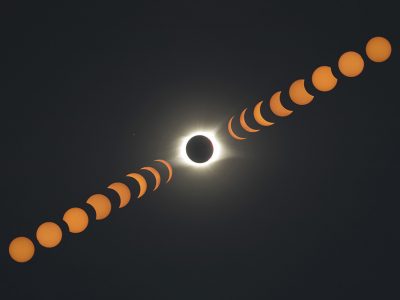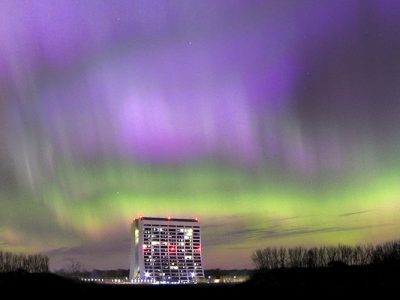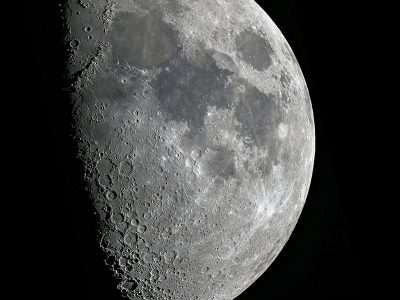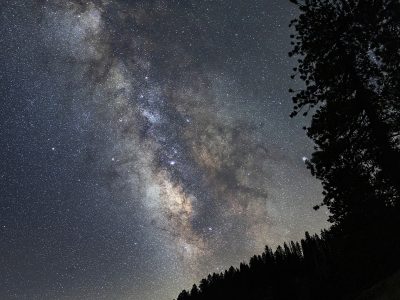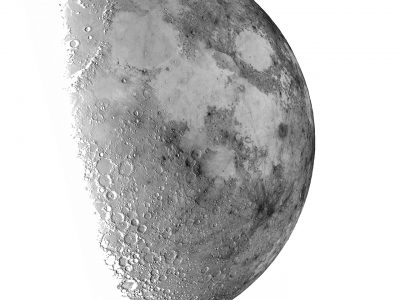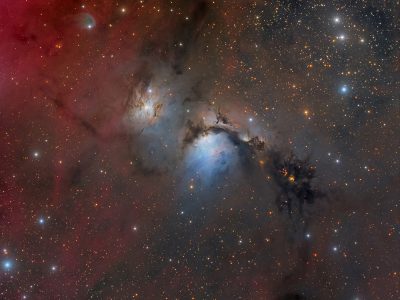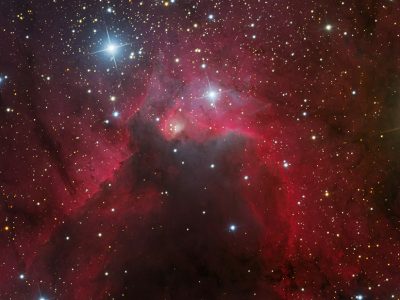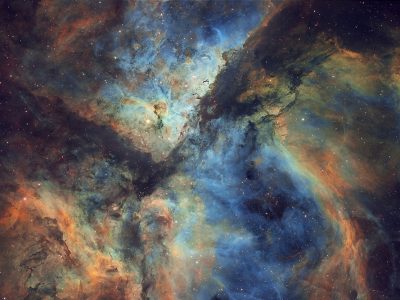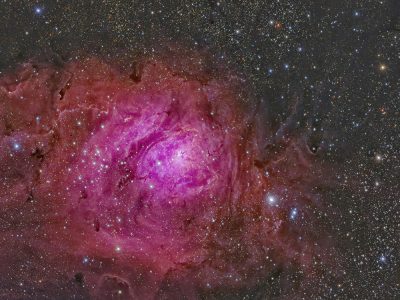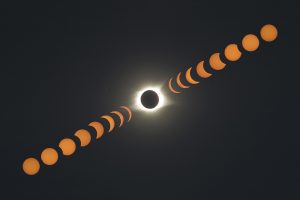- March 20 - Sept. 10, 2020, 12:00 pm US/Central
Introducing
Fermilab Arts & Lectures
At Home
Free registration SOLD OUT
- Art Gallery Talk- The Hubble Palette by Dr. Eric Coles – July 22 7:30pm CDT
The Hubble Palette – Mapped Colors of Emission Nebula: A Live Demonstration
View the At Home presentation HERE
Space and earth-based telescopes look at a wide variety of the electromagnetic spectrum all the way from radio waves, through the visible spectrum to high energy gamma rays. They use filters or sensors of one sort or another to select for certain of these wavelengths. However when they want to represent this information in an image they are limited to the visible spectrum. That is, something out eyes can sense. Therefore the collected wavelengths, say in the infrared, need to be “mapped” to a color we can see.
Emission nebula, clouds of gas and dust, are some of the most interesting targets of study in our Milky Way galaxy. Their structure can be studied by looking at the emissions of certain elements contained in these nebula, the most common of course is hydrogen, but also includes oxygen and sulfur. Very narrowband filters have been developed to select out certain emission lines for those three elements. Astrophotographers, using their telescopes, cameras and these filters, collect these three emissions referred to sulfur ll, hydrogen-alpha and oxygen lll. These collected images are assigned/mapped to the visible RGB (Red-Green-Blue) colors represented on our digital monitors or printed. This mapping, sulfur ll=red, hydrogen-alpha=green and oxygen lll=blue, is commonly called the Hubble Palette. How and why this is done is the subject of the demonstration.
Martin Murphy
Eric Coles
Humanity has long held a deep interest in the night sky. Since the dawn of our existence we’ve strived to understand what was happening above us. Ancient astronomers used the night sky to predict things like seasons for growth and harvest and when and where to migrate, etc. We did not understand what those pinpoints of light were until relatively recently in our common history. New discoveries led to new questions and new theories. All of this led to improved technology and it was all driven by human curiosity.
This curiosity has shaped the perspective of the two artists – Dr. Eric Coles & Martin Murphy – in Imaging the Cosmos. Dr. Coles is formally trained as a research biochemist. He has held research positions with Harvard and Columbia medical schools in addition to founding Alexon Biomedical and Xickle LLC. Beyond his research and business background Dr. Coles has always been keenly interested in all things scientific, especially related to astronomy.
For the past 23 years Martin Murphy has worked in the Accelerator Operations department at Fermi National Accelerator Laboratory. There he works with operators, physicists, engineers, and technicians to make high power proton beam for unrivaled neutrino production.
Mr. Murphy has been an avid photographer and amateur astronomer for many years. He too has taken advantage of technological improvements to image the sky in places ranging from his backyard in light polluted Chicagoland to mountain tops in Chile. He was part of a team producing images for the Dark Energy Survey. The images have been in various journals, websites and publications like National Geographic.
While Dr. Coles focuses on bringing distant and faint objects to life for his viewers, Mr. Murphy often incorporates a wider view of the sky and landscape. Viewed together these artists bring complementary perspectives to similar subject matter. Dr. Coles reveals the splendor of objects that appear small in the sky and Mr. Murphy exposes the grandeur that is always present but rarely seen in today’s light-polluted world.
On Display March 20, 2020 EXTENDED through September 10, 2020




